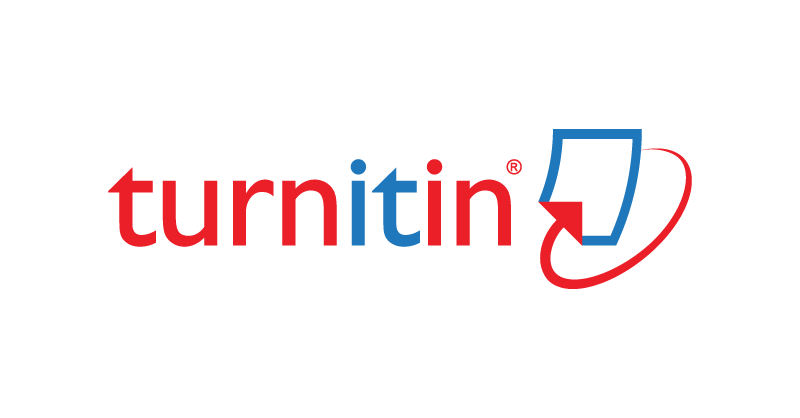Enhancing sugarcane harvest and load scheduling efficiency: a linear programming approach in East Java, Indonesia
Abstract
Keywords
Full Text:
PDFReferences
Abel, D. J., K. P. Stark, C. R. Murry, and Y. M. Demoulin. 1981. A routing and scheduling problem for a rail system: A case study. Journal of the Operational Research Society 32(9):767–774.
Afifah, E. N., A. Alamsyah, and E. Sugiharti. 2018. Scheduling Optimization of Sugarcane Harvest Using Simulated Annealing Algorithm. Scientific Journal of Informatics 5(2):138–147.
Antika, L., and P. S. V. R. Ingesti. 2020. Analisis Lama Waktu Pangkal Batang Tebu (Saccharum officinarum L.) Tertinggal di Lahan Terhadap Nilai Rendemen. Vigor: Jurnal Ilmu Pertanian Tropika Dan Subtropika 5(1):19–23.
Bantacut, T., Sukardi, and I. A. Supatma. 2012. Kehilangan Gula dalam Sistem Tebang Muat Angkut di Pabrik Gula Sindang Laut dan Tersana Baru, Cirebon. Jurnal Teknologi Pertanian 13(3):199–206.
BPS Republik Indonesia. 2023. Statistik Tebu Indonesia 2022. Badan Pusat Statistik Republik Indonesia.
Caixeta-Filho, J. V., and A. E. Miyashita. 2018. Continuous periods for harvesting schedules: A numerical application for the Brazilian sugarcane industry. Pesquisa Operacional 38(3):535–554.
Diaz, J. A., and H. G. Perez. 2000. Simulation and optimization of sugar cane transportation in harvest season. Pages 1114–1117 2000 Winter Simulation Conference Proceedings (Cat. No.00CH37165). IEEE.
Hansen, A. C., A. J. Barnes, and P. W. L. Lyne. 2002. Simulation Modeling of Sugarcane Harvest to Mill Delivery Systems. Transactions of the ASAE 45(3):531–538.
Higgins, A. 2006. Scheduling of road vehicles in sugarcane transport: A case study at an Australian sugar mill. European Journal of Operational Research 170(3):987–1000.
Junqueira, R. D. Á. R., and R. Morabito. 2017. Optimization approaches for sugarcane harvest front programming and scheduling. Gestao e Producao 24(2):407–422.
Junqueira, R. de Á. R., and R. Morabito. 2019. Modeling and solving a sugarcane harvest front scheduling problem. International Journal of Production Economics 213(September 2018):150–160.
Kementerian Pertanian Republik Indonesia. 2022. Outlook Komoditas Perkebunan Tebu. Pusat Data dan Sistem Informasi Pertanian Sekretariat Jenderal - Kementerian Pertanian, Jakarta.
Kurniawan, I. E., and . Purwono. 2018. Tebang, Muat dan Angkut di Wilayah PG Madukismo, Yogyakarta. Buletin Agrohorti 6(3):354–361.
Kuspratomo, A. D., Burhan, and M. Fakhry. 2012. Pengaruh Varietas Tebu, Potongan Dan Penundaan Giling Terhadap Kualitas Nira Tebu. Agrointek 6(2):123.
Magfiroh, I. S., and R. Wibowo. 2019. Manajemen Risiko Rantai Pasok Tebu (Studi Kasus di PTPN X) The Supply Chain Risk Management of Sugarcane (Case Study in PTPN X). Jurnal Pangan 28(3):203–212.
Mahbubi, A. 2018. Sistem Dinamis Rantai Pasok Industrialisasi Gula Berkelanjutan di Pulau Madura. Agriekonomika 4(2):198–209.
Massie, N. I. K., D. P. E. Saerang, and V. Z. Tirayoh. 2018. Analisis Pengendalian Biaya Produksi untuk Menilai Efisiensi dan Efektivitas Biaya Produksi. GOING CONCERN : JURNAL RISET AKUNTANSI 13(04):355–364.
Mayangsari, A. 2018. Faktor-Faktor yang Mempengaruhi Produksi Gula PG. Wringin Anom Kabupaten Situbondo. Pages 33–39 Conference on Innovation and Application of Science and Technology (CIASTECH 2018.
Milan, E. L., S. M. Fernandez, and L. M. P. Aragones. 2006. Sugar cane transportation in Cuba, a case study. European Journal of Operational Research 174(1):374–386.
Morales-Chávez, M. M., J. A. Soto-Mejía, and W. A. Sarache. 2016. A mixed-integer linear programming model for harvesting, loading and transporting sugarcane. A case study in Peru. Dyna 83(195):173–179.
De Oliveira Florentino, H., and M. V. Pato. 2014. A bi-objective genetic approach for the selection of sugarcane varieties to comply with environmental and economic requirements. Journal of the Operational Research Society 65(6):842–854.
Prasetiyo, P., W. H. Susanto, and S. D. Wijayanti. 2016. Effect of Storage Conditions and Antiinverse Concentration on Juice Sugar Cane Quality and Yield While. Jurnal Pangan dan Agroindustri 4(1):137–147.
Purwaningsih, I., U. Effendi, and M. Rizqi. 2010. Pengembangan Model Antrian pada Stasiun Timbangan Tebu di PG Pandjie Situbondo. Jurnal Teknologi Pertanian 11(1):62–70.
Salassi, M., L. Champagne, and B. Legendre. 2002. Maximizing economic returns from sugarcane production through optimal harvest scheduling. American Society of Sugarcane Technologists 22(2002):30–44.
Sargent, R. G. 2013. Verification and validation of simulation models. Journal of Simulation 7(1):12–24.
Saskia, D. Y., and Waridin. 2012. Biaya dan Pendapatan Usahatani Tebu Menurut Status Kontrak (Studi Kasus di PT IGN Cepiring, Kab. Kendal). Diponegoro Journal of Economics 1(1):1–12.
Sayyida. 2011. Pengaruh Biaya Produksi Terhadap Laba Perusahaan. PERFORMANCE: Jurnal Bisnis & Akutansi IV(1):1–13.
Scarpari, M. S., and E. G. F. De Beauclair. 2010. Optimized Agricultural Planning of Sugarcane Using Linear Programming. Revista Investigacion Operacional 31(2):126–132.
da Silva, A. F., and F. A. S. Marins. 2014. A Fuzzy Goal Programming model for solving aggregate production-planning problems under uncertainty: A case study in a Brazilian sugar mill. Energy Economics 45:196–204.
da Silva, A. F., F. A. S. Marins, and E. X. Dias. 2015. Addressing uncertainty in sugarcane harvest planning through a revised multi-choice goal programming model. Applied Mathematical Modelling 39(18):5540–5558.
da Silva, A. F., F. A. Silva Marins, and J. A. Barra Montevechi. 2013. Multi-choice mixed integer goal programming optimization for real problems in a sugar and ethanol milling company. Applied Mathematical Modelling 37(9):6146–6162.
Susila, W., and M. Hutagaol. 2005. Model keterpaduan jadual dan tebang tebu: pendeketan kompromi. Jurnal Manajemen dan Agribisnis 2(2):129–144.
Taha, H. A. 2017. Operations Research: An Introduction, 10th edition. 10th edition. Pearson Education Limited, Harlow.
Utomo, A. H., R. Sarno, R. V. H. Ginardi, and M. A. Yaqin. 2022. Optimizing Cost of Sugarcane Logging and Transportation to Milling Using Iterative Fuzzy Inference System. International Journal of Intelligent Engineering and Systems 15(5):566–578.
DOI
https://doi.org/10.21107/agrointek.v19i2.22145Metrics
Refbacks
- There are currently no refbacks.
Copyright (c) 2025 Bambang Herry Purnomo, Lituhayu Supartiningrum

This work is licensed under a Creative Commons Attribution 4.0 International License.

